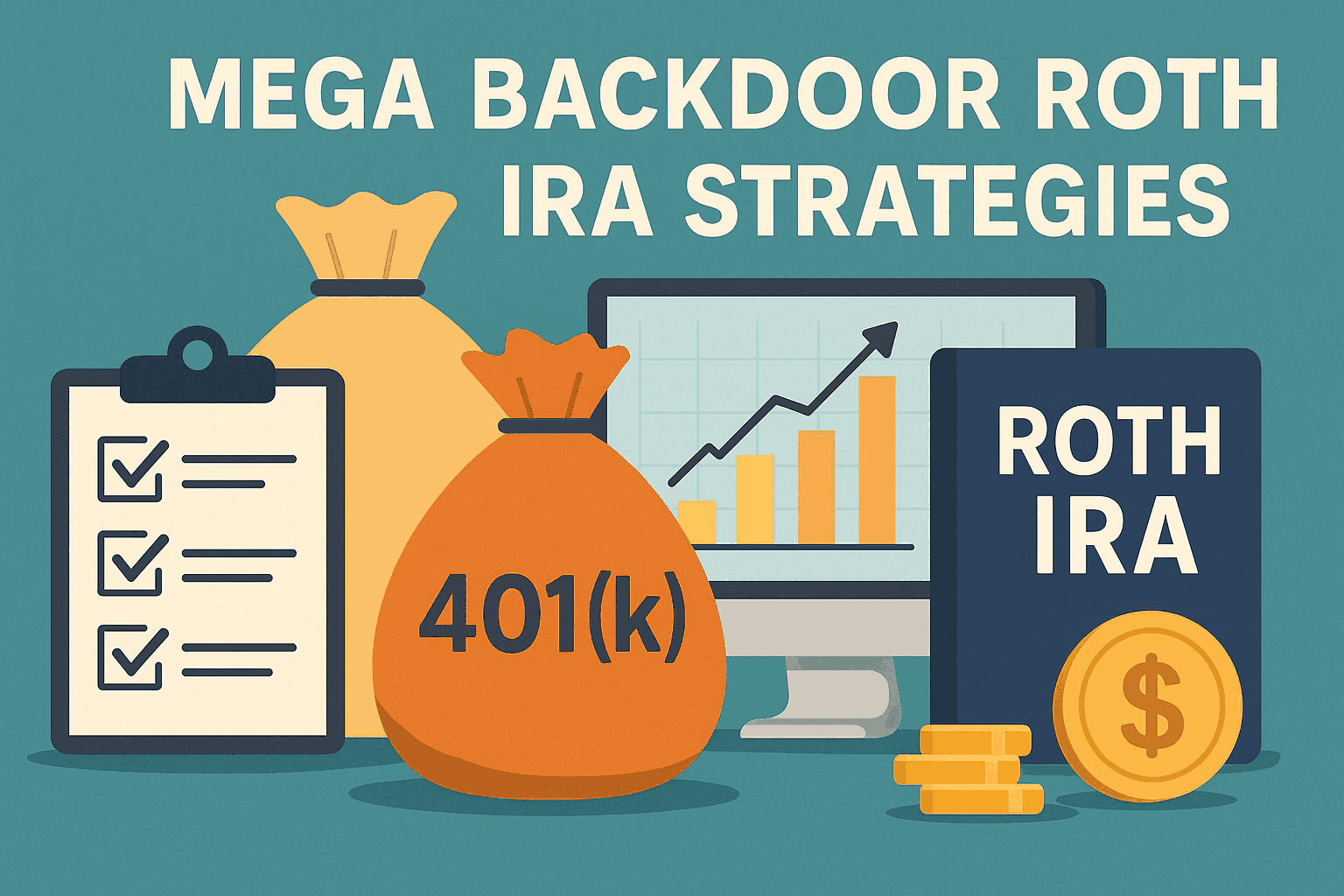
If you’ve maxed out your regular Roth IRA or 401(k) and still want to stash more into tax-advantaged accounts, the Mega Backdoor Roth IRA is your secret weapon. This advanced strategy allows high earners to contribute tens of thousands of extra dollars into a Roth IRA—far beyond normal IRS limits.
It’s completely legal, IRS-approved, and incredibly powerful for long-term tax-free growth—especially for those with access to certain types of 401(k) plans.
What Is a Mega Backdoor Roth IRA?
The Mega Backdoor Roth IRA is a strategy that lets you contribute after-tax dollars into your 401(k) and then convert that money into a Roth IRA or Roth 401(k).
This technique enables contributions up to the total IRS 401(k) limit, not just the employee deferral cap. For 2025, the total cap is $66,000 (or $73,500 if you’re over 50).
This is far higher than the standard Roth IRA contribution limit of $7,000 ($8,000 if 50+), and allows significant extra savings.
How It Works: Step-by-Step Strategy
- Contribute to your traditional 401(k)
- Max out the regular pre-tax or Roth contribution limit: $23,000 in 2025.
- Make after-tax contributions to your 401(k)
- Your plan must allow after-tax contributions beyond the standard $23,000.
- Roll over after-tax contributions
- Convert them to a Roth IRA (outside the plan) or Roth 401(k) (inside the plan) as soon as possible to avoid taxable growth.
- Repeat annually
- As long as your plan allows, you can use this strategy every year.
Example Breakdown
| Action | Amount (2025 limits) |
|---|---|
| Regular 401(k) contributions | $23,000 |
| Employer match (if applicable) | $6,000 |
| After-tax contributions | $37,000 |
| Total going into retirement accounts | $66,000 |
Without the Mega Backdoor Roth, that $37,000 after-tax contribution wouldn’t be eligible for Roth conversion. But with it, you can move that money into a Roth IRA and let it grow tax-free forever.
Requirements for Using the Strategy
To use the Mega Backdoor Roth IRA, your 401(k) plan must:
- Allow after-tax contributions (not just Roth or pre-tax)
- Allow in-service withdrawals or in-plan Roth conversions
If either of these is missing, the strategy may not work. Check with your HR or plan administrator.
Pros of the Mega Backdoor Roth
High Contribution Limits
Contribute significantly more than a traditional Roth or IRA.
Tax-Free Growth
Once converted to a Roth, your money grows tax-free and can be withdrawn tax-free in retirement.
No Income Limits
Unlike standard Roth IRAs, this strategy works regardless of your income level.
Estate Planning Advantage
Roth IRAs don’t have Required Minimum Distributions (RMDs) for original account holders, making them ideal for passing on wealth.
Cons and Caveats
Complexity
The process requires precise timing and paperwork. Missing a step can lead to unexpected taxes.
Limited to Certain Plans
Most 401(k)s don’t support after-tax contributions or in-service rollovers. Corporate plans like Google, Microsoft, or IBM often do.
Requires Diligent Monitoring
You must convert the after-tax contributions quickly to avoid taxable gains.
No Immediate Tax Deduction
After-tax contributions are not deductible like traditional 401(k) inputs.
Mega Backdoor Roth vs. Backdoor Roth IRA
| Feature | Backdoor Roth IRA | Mega Backdoor Roth IRA |
|---|---|---|
| Contribution limit | $7,000 | Up to $66,000 |
| Income limits | Bypassed | Irrelevant |
| Plan required | None | 401(k) with after-tax options |
| Tax on conversion | None (if done properly) | None (if done properly) |
| Suitable for | Moderate earners | High earners with good plans |
The regular backdoor Roth is better for those without access to employer plans. The mega version is for employees of companies with flexible 401(k) features.
Key Tax Considerations
- Conversions of after-tax contributions are tax-free if no earnings have accrued
- If you delay the rollover, any growth is taxable at conversion
- Keep good records and complete IRS Form 8606 accurately
- Use separate tracking for pre-tax and after-tax amounts in your 401(k)
You may want to consult a CPA familiar with retirement strategies to avoid triggering unexpected tax liabilities.
Ideal Candidates for the Mega Backdoor Roth
This strategy is perfect for:
- High earners who’ve maxed out traditional retirement options
- Employees of large tech or financial firms with flexible 401(k)s
- Investors focused on tax-free income in retirement
- People who want to pass wealth to heirs efficiently
Tips for Success
- Act early each year to allow full contribution and conversion
- Use payroll deductions to automate after-tax contributions
- Convert monthly or quarterly to avoid buildup of taxable gains
- Check plan documents annually for changes in rules or limits
Final Thoughts
The Mega Backdoor Roth IRA is one of the most powerful tools for high-income earners who want to maximize their retirement savings and lock in long-term tax-free growth.
While it may not be available to everyone, those with the right plan can leverage it to funnel thousands more into Roth accounts each year—building a massive tax-free retirement portfolio.
If your employer offers the necessary features, take full advantage and work with a professional to get the timing right. This strategy could save you hundreds of thousands in taxes over your lifetime.